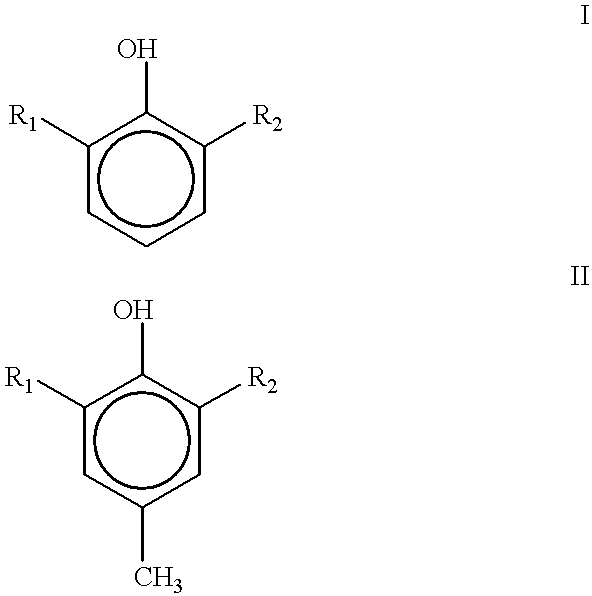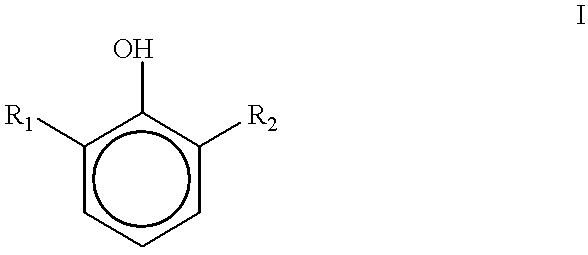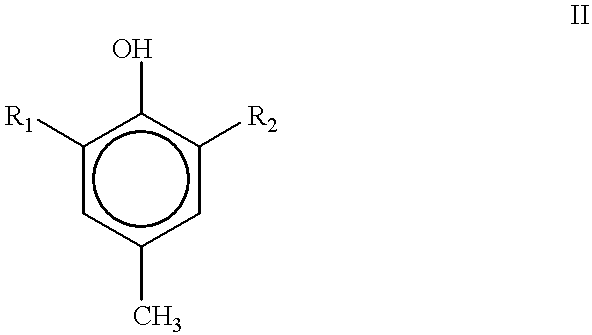Electrical insulating oil with reduced gassing tendency
a technology of electric insulation oil and gassing tendency, which is applied in the direction of hydrocarbon oil cracking, liquid organic insulators, hydrocarbon distillation, etc., can solve the problems of limited use of oxidation inhibitors, and achieve the effect of reducing the gassing tendency of paraffinic or naphthenic basestocks
- Summary
- Abstract
- Description
- Claims
- Application Information
AI Technical Summary
Benefits of technology
Problems solved by technology
Method used
Image
Examples
Embodiment Construction
[0020] Two different batches of a typical paraffinic oil (Solvent Neutral 145) suitable for use as an electrical oil were blended with varying amounts of phenols represented by formula I and II. The specific amounts of the phenols used in each blend are given in Table 1. In two of the blends a metal deactivator used in electrical oil compositions was also used. The amount of metal deactivator also is given in Table 1.
1TALBE 1 Effect of Phenolic and Metal Deactivator to Enhance Gassing Tendency Blend 1 Blend 2 Blend 3 Blend 4 Blend 5 Solvent Neutral 145 (A) 98.69 98.79 98.75 98.45 Solvent Neutral 145 (B) 98.45 Phenol, (1), Formula I 1.31 0.50 0.50 0.50 Phenol, (2), Formula II 1.21 0.75 0.75 0.75 Metal Deactivator, (3)0.30 0.30 Formula III Gassing Tendency 2.7 3.0 0.7 0.1 -4.2 notes: A and B are two different but typical batches of Solvent Neutral 145 (1) 2,6-di-tert-butyl phenol (2) 2,6-di-tert-butyl cresol (3) metal deactivator is tolyltriazole diphenyl amine reaction product
[0021] ...
PUM
| Property | Measurement | Unit |
|---|---|---|
| weight ratio | aaaaa | aaaaa |
| viscosity | aaaaa | aaaaa |
| weight ratio | aaaaa | aaaaa |
Abstract
Description
Claims
Application Information
 Login to View More
Login to View More - R&D
- Intellectual Property
- Life Sciences
- Materials
- Tech Scout
- Unparalleled Data Quality
- Higher Quality Content
- 60% Fewer Hallucinations
Browse by: Latest US Patents, China's latest patents, Technical Efficacy Thesaurus, Application Domain, Technology Topic, Popular Technical Reports.
© 2025 PatSnap. All rights reserved.Legal|Privacy policy|Modern Slavery Act Transparency Statement|Sitemap|About US| Contact US: help@patsnap.com



